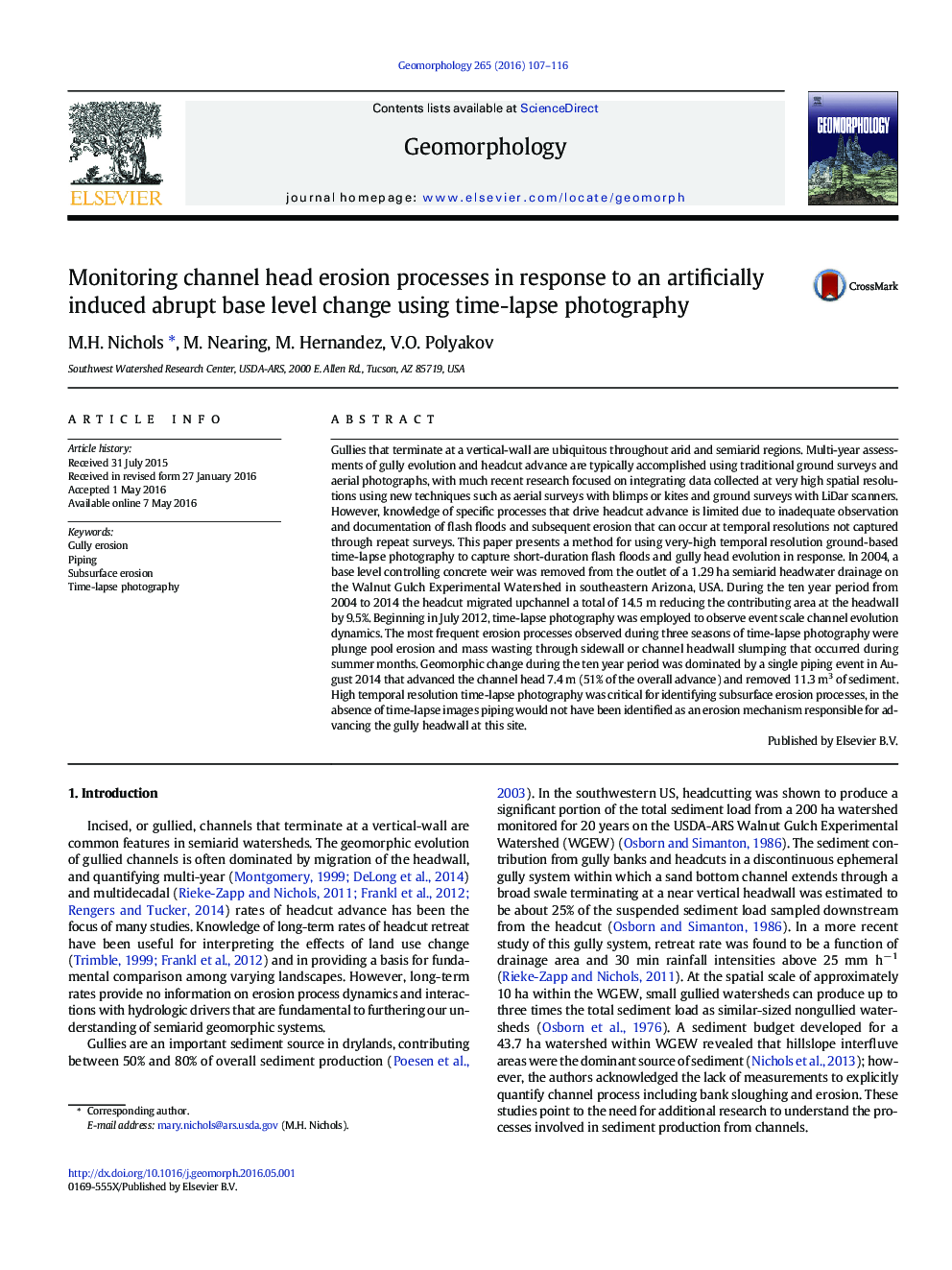| کد مقاله | کد نشریه | سال انتشار | مقاله انگلیسی | نسخه تمام متن |
|---|---|---|---|---|
| 4684008 | 1635384 | 2016 | 10 صفحه PDF | دانلود رایگان |
• A base level controlling weir was removed from a 1.29 ha semiarid headwater drainage.
• Headcut advance was measured from 2004 to 2014.
• Time-lapse images from 2012 to 2014 were critical for identifying subsurface erosion.
• A single subsurface erosion event preceded 51% of the advance.
Gullies that terminate at a vertical-wall are ubiquitous throughout arid and semiarid regions. Multi-year assessments of gully evolution and headcut advance are typically accomplished using traditional ground surveys and aerial photographs, with much recent research focused on integrating data collected at very high spatial resolutions using new techniques such as aerial surveys with blimps or kites and ground surveys with LiDar scanners. However, knowledge of specific processes that drive headcut advance is limited due to inadequate observation and documentation of flash floods and subsequent erosion that can occur at temporal resolutions not captured through repeat surveys. This paper presents a method for using very-high temporal resolution ground-based time-lapse photography to capture short-duration flash floods and gully head evolution in response. In 2004, a base level controlling concrete weir was removed from the outlet of a 1.29 ha semiarid headwater drainage on the Walnut Gulch Experimental Watershed in southeastern Arizona, USA. During the ten year period from 2004 to 2014 the headcut migrated upchannel a total of 14.5 m reducing the contributing area at the headwall by 9.5%. Beginning in July 2012, time-lapse photography was employed to observe event scale channel evolution dynamics. The most frequent erosion processes observed during three seasons of time-lapse photography were plunge pool erosion and mass wasting through sidewall or channel headwall slumping that occurred during summer months. Geomorphic change during the ten year period was dominated by a single piping event in August 2014 that advanced the channel head 7.4 m (51% of the overall advance) and removed 11.3 m3 of sediment. High temporal resolution time-lapse photography was critical for identifying subsurface erosion processes, in the absence of time-lapse images piping would not have been identified as an erosion mechanism responsible for advancing the gully headwall at this site.
Journal: Geomorphology - Volume 265, 15 July 2016, Pages 107–116
